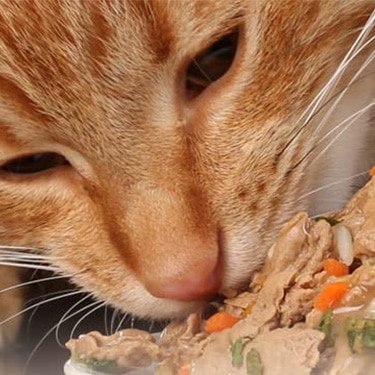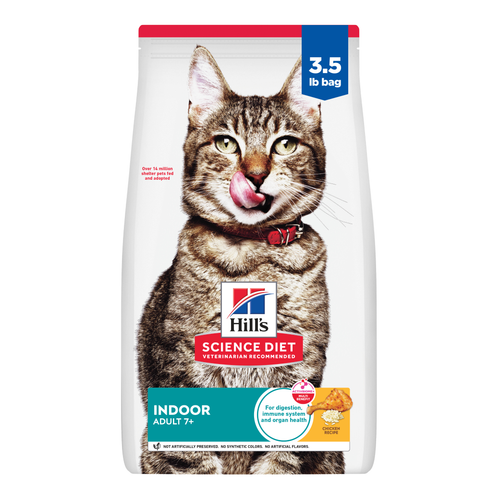
-
Find the right food for your petTake this quiz to see which food may be the best for your furry friend.Find the right food for your petTake this quiz to see which food may be the best for your furry friend.Featured products
 Hill's Science Diet Adult Chicken & Beef Entrée Dog Food
Hill's Science Diet Adult Chicken & Beef Entrée Dog FoodChicken & Beef Entrée in a delicious loaf with complete & balanced nutrition to help keep adult dogs active and healthy
Shop Now Adult Chicken & Barley Recipe Dog Food
Adult Chicken & Barley Recipe Dog FoodSupports lean muscle and beautiful coat for adult dogs
Shop Now Adult Large Breed Chicken & Barley Recipe Dog Food
Adult Large Breed Chicken & Barley Recipe Dog FoodSupports healthy joints, lean muscle, and beautiful coat for large breed dogs
Shop NowFeatured products Senior Vitality Adult 7+ Tuna & Vegetables Stew
Senior Vitality Adult 7+ Tuna & Vegetables StewImproves Everyday Ability to Get Up & Go
Shop Now Adult Turkey & Liver Entrée Cat Food
Adult Turkey & Liver Entrée Cat FoodPrecisely balanced nutrition with the delicious taste of minced turkey & liver to help fuel the energy needs of cats during the prime of their life
Shop Now Adult Tender No Corn, Wheat, Soy Chicken & Vegetables Stew Cat FoodShop Now
Adult Tender No Corn, Wheat, Soy Chicken & Vegetables Stew Cat FoodShop Now -
Dog
- Dog Tips & Articles
-
Health Category
- Weight
- Food & Environmental Sensitivities
- Urinary
- Digestive
- Joint
- Kidney
-
Life Stage
- Puppy Nutrition
- Adult Nutrition
- Senior Nutrition
Cat- Cat Tips & Articles
-
Health Category
- Weight
- Skin & Food Sensitivities
- Urinary
- Digestive
- Kidney
-
Life Stage
- Kitten Nutrition
- Adult Nutrition
Featured articles The Science Behind Our Love for Pets
The Science Behind Our Love for PetsLearn the scientific reasons why we have such strong connections with our pets, and what science says about the love between humans and our furry friends.
Read More What Is Littermate Syndrome? Pet Adoption Guide
What Is Littermate Syndrome? Pet Adoption GuideLearn more about littermate syndrome in dogs and cats and how to successfully navigate adoption and early socialization processes.
Read More How to Properly Mix Wet & Dry Pet Foods
How to Properly Mix Wet & Dry Pet FoodsAn Orange cat eating from a bowl filled with mixed food
Read More -


What is a munchkin cat? If you've seen a cat that resembles a dachshund, long in body but with short legs, then there's a good chance that you've gotten a glimpse of one of the munchkin cat breeds!
Dating back to the early 20th century, munchkin cats have popped up around the globe and are recognized by The International Cat Association (TICA) and the South African Cat Council (SACC). However, munchkin cat breeds aren't recognized by some other cat clubs, including the Cat Fanciers' Association (CFA) USA or Europe, the American Cat Fanciers Association (ACFA), the Fédération Internationale Féline (FIFe) or the Governing Council of the Cat Fancy (GCCF).
Let's take a look at some of the defining features and personality traits for munchkin cats.
What Is a Munchkin Cat?
Although their name suggests otherwise, munchkin cats are not perpetually kitten-like. They retain their trademark short legs, but as they grow into adulthood, munchkins do develop adult-sized bodies, including a long spine and tail. And if the dachshund comparison sounds familiar, the breed name may also ring a bell: It's named after the munchkin characters in L. Frank Baum's book, "The Wonderful Wizard of Oz," by Solveig Pflueger, a member of TICA.
This genetic mutation isn't new, but munchkin cats were rare; they weren't recognized as a breed until the early 1990s. Today's munchkin cats descend from cats with diminutive legs discovered by Sandra Hockenedel in Louisiana in the 1980s.
Features
The distinct feature of a munchkin cat is their short legs, which are due to a spontaneous genetic mutation, meaning that it naturally occurred. "Their short legs are caused by an autosomal dominant gene, which causes the long bones in a cat's legs to develop at a shorter length," explains TICA. This inherited genetic trait of dwarfism, presenting as short legs, is passed on to the offspring of munchkin cats. The risks associated with the genetic mutation prohibit munchkin cats from procreating with one another, and so they reproduce with domestic non-breed specific cats, specifies TICA in their munchkin breed standards.

What is a munchkin cat paired with? Often, they're bred with the domestic shorthair or longhair, resulting in "lustrous," "plush" and "silky" coats and "medium" features. Generally, they're average in weight — around 10 pounds or 4-4.5 kilograms, says My Family Vets — and length, about 18 inches (45.72 cm) long. Their markings present in any pattern or color, and their eyes may also be any color.


Tasty Tips
Personality
Don't be fooled by their average stats or short legs: Munchkin cats move swiftly! Their pattern of movement is often compared to that of a ferret because of their propensity to maneuver side to side. Munchkin cats can also jump onto furniture, albeit not as high as their taller counterparts; if you bring a munchkin into your home, you still have to kitty-proof your home!
Quick and lively, the munchkin cat always is up for playing and cuddling. They're also very intelligent and require mental stimulation, which they can get from enrichment activities such as food puzzles, mechanical toys and even electronics with apps geared specifically for cats!
Munchkin cats do have one quirky trait that sets them apart from most other cat breeds: They're hoarders, as the Cummings School of Veterinary Medicine at Tufts University says in TuftsNow, with a particular penchant for "jewelry and small shiny objects." Tufts suggests that hoarding in animals provides "short-lived relief from stress," so provide your munchkin cat with plenty of baubles from which to choose for their stash, or else you may find your own trinkets gone missing.
Caring for Munchkin Cat Breeds
A munchkin cat needs the same basic care as all other cats: access to fresh water at all times, nutritious cat food, routine grooming, regular veterinarian checkups and engagement with their humans.

Because of their genetic mutation, munchkin cats may be predisposed to medical issues, says Dr. Sarah Wooten: "Dwarfed cats often have joint problems and abnormally curved spines that can predispose them to herniated spinal discs." Common joint and spinal issues may include arthritis, osteoarthritis and degenerative joint disease (DJD), says the Cornell Feline Health Center. Speak with your vet to develop a health plan for your little munchkin.
With an average life span of 12 to 15 years and a spirited personality, munchkin cat breeds liven up their pet parents' homes!


Christine O'Brien is a writer, mom, and long-time cat parent whose two Russian Blues rule the house. Her work also appears in Care.com, What to Expect, and Fit Pregnancy, where she writes about pets, pregnancy, and family life. Find and follow her on Instagram and Twitter @brovelliobrien.
Related products

Supports energy level and beautiful fur in mature indoor cats

Precisely balanced nutrition with the delicious taste of minced turkey & liver to help fuel the energy needs of cats during the prime of their life

Improves Everyday Ability to Get Up & Go

Related articles

Discover how to train your cat, starting with very basic first steps that both reward good behavior and discourage the bad.

Learn how to litter train a kitten with this guide to potty training, including when to start litter training kittens and troubleshooting tips.

When you adopt a cat, you don't just gain a best friend; you also save her life. Here's why getting a cat from a local animal shelter makes so much sense.

Discover which cat toys games your feline friend might like, and how they are great sources of exercise. Explore our library of articles to learn more.

Put your cat on a diet without them knowing
Our low calorie formula helps you control your cat's weight. It's packed with high-quality protein for building lean muscles, and made with purposeful ingredients for a flavorful, nutritious meal. Clinically proven antioxidants, Vitamin C+E, help promote a healthy immune system.
Put your cat on a diet without them knowing
Our low calorie formula helps you control your cat's weight. It's packed with high-quality protein for building lean muscles, and made with purposeful ingredients for a flavorful, nutritious meal. Clinically proven antioxidants, Vitamin C+E, help promote a healthy immune system.

